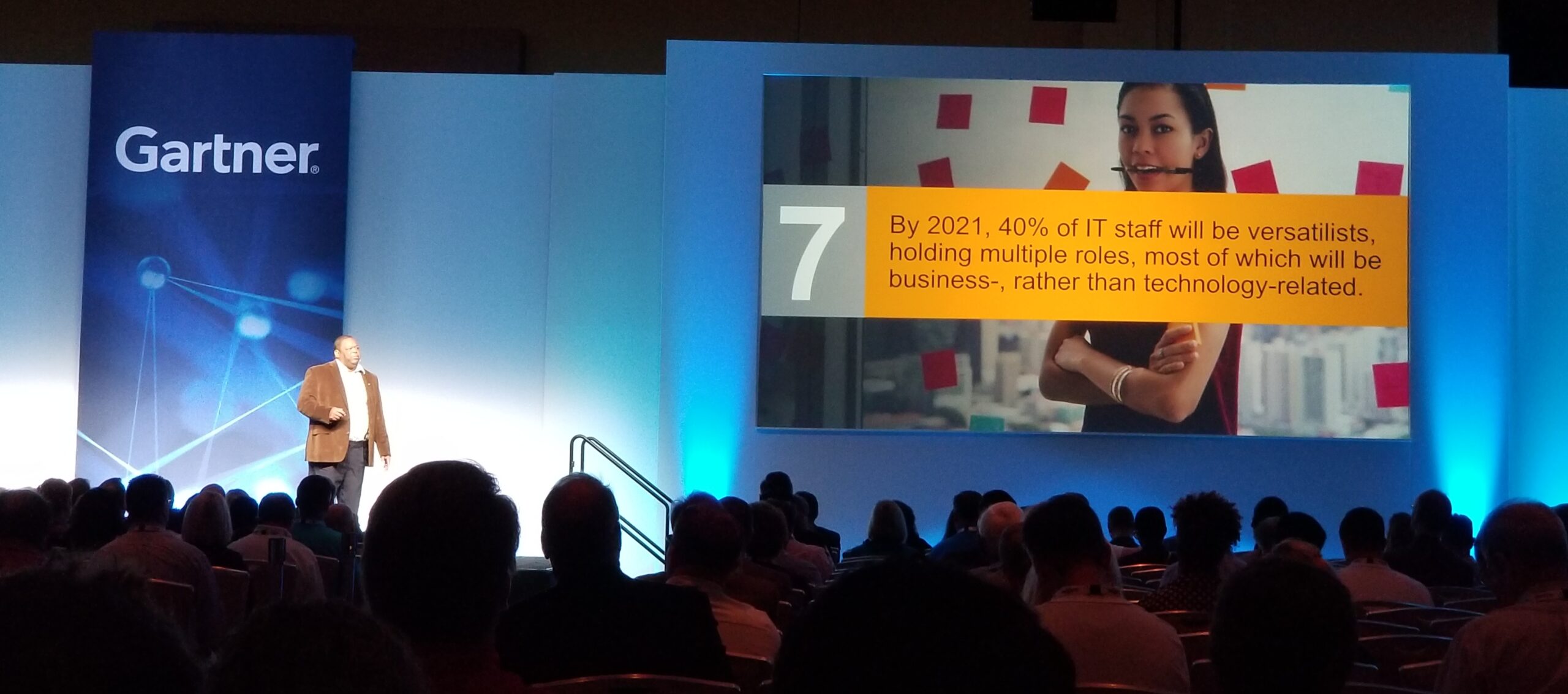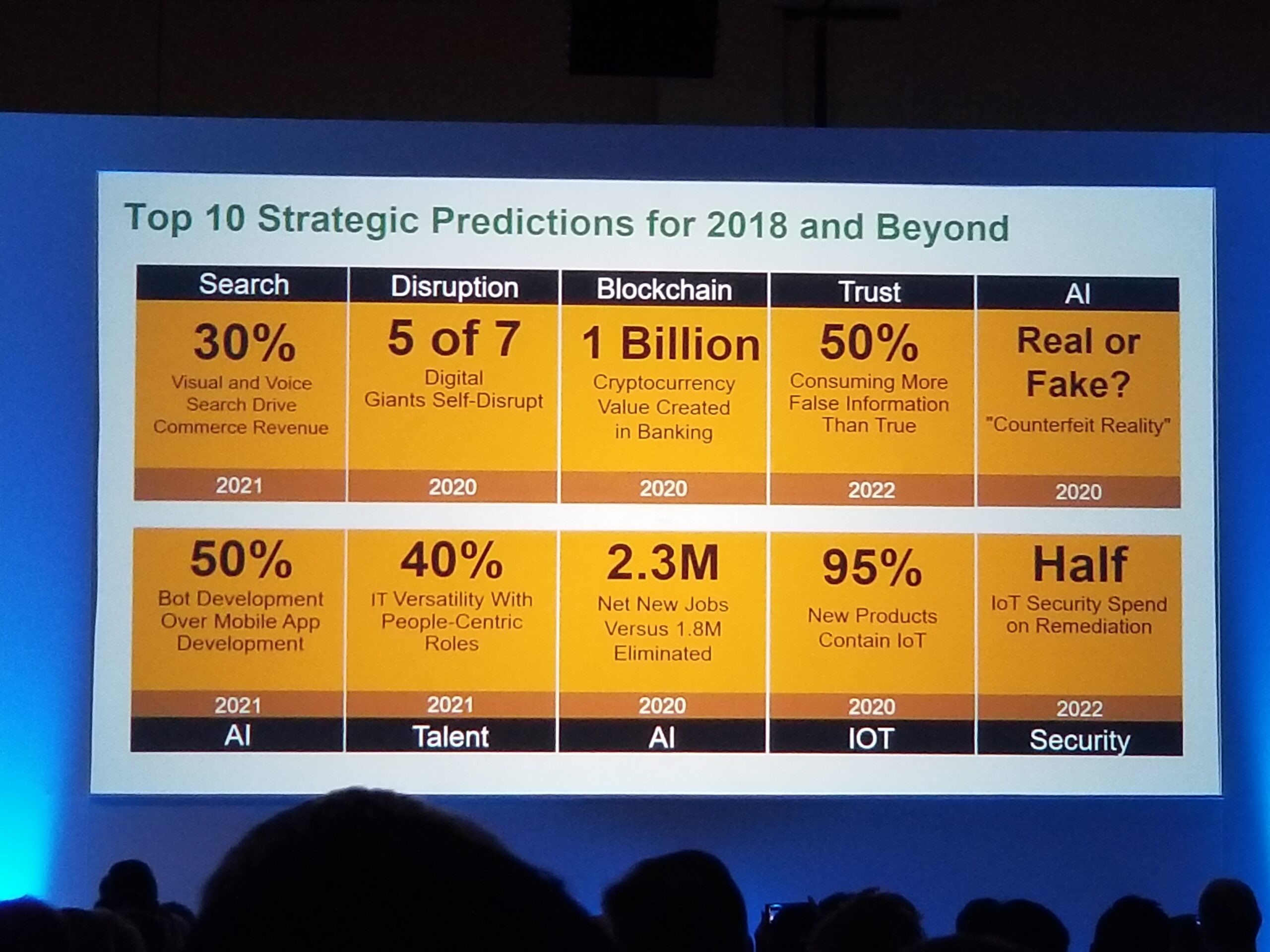
Here we are three weeks after the Gartner IT Sourcing, Procurement, Vendor & Asset Management Summit 2018, and I’m still unwinding from the buzz of the event. From driving IT cost optimization to contract negotiations to the state of cloud security, there was no shortage of hot topics in Orlando this year. In case you missed it, here are three key takeaways from my perspective:
IT and Finance Roles are Morphing
The relationship between people and machines are changing and our expectations are changing too. In the Gartner Keynote “Gartner’s Top Predictions: Pace Yourself for Sanity’s Sake”, Daryl Plummer, VP and Gartner Fellow, shared the following prediction:
“By 2021, 40% of IT staff will be versatilists, holding multiple roles, most of which will be business-, rather than technology-related.”

Not only has the role of the CIO changed, but this prediction suggests that every IT professional must morph or be replaced by automation.
Coincidentally, just days after Plummer’s keynote in Orlando, Florida, Kathryn Sharrett, CFO of Financial Services Compensation Scheme stated something very similar about finance roles at the CFO Rising Europe Summit in London (read more).
“Change is here, and there is no way to get around the fourth industrial revolution in finance,” Sharrett stated as she opened her presentation. “We’ve gone from being in positions that revolve around preparation, figures, and excel spreadsheets- adding up on calculations in that typical ‘bean-counter’ role- to becoming more of a strategic business partner,” she added.
Sound familiar?
The moral of the story here is both IT and finance professionals must expect disruption and prepare to be adaptable, flexible, and innovative to match the needs of a dynamically changing job market.
IT has a Value Story – Tell it.
In Robert Naegle’s session “How to Tell the IT Value Story and Build Metrics to Communicate to Business Leadership”, the Gartner Analyst shared the biggest issue IT faces with telling the value story is relating to the audience.
The audience doesn’t care what you’re “selling” but instead what they are “buying.” What pain does your solution solve? For example, your CEO is not interested in workstations, network connectivity, support labor, etc.… but is interested in the value proposition these “parts” offer as a whole– workforce productivity, for example.
To overcome this, CIOs must connect IT’s contributions with the overall business strategy—and in a language the business understands. Getting everyone on the same page serves as the foundation of collaboration toward shared goals.
Gartner Research VP Jim McGittigan also shared some insights around this topic- specifically how to improve IT financial transparency to drive more value. He noted that IT organizations have shifted from an “inside-out” model, where costs are shared and driven by supply, to an “outside-in” model, where IT is run like a business and is competitive and driven by demand. In the absence of transparency, what often happens is when revenue drops, the IT budget gets cut.
McGittigan went on to discuss the distinct difference between how IT perceives itself and how others perceive them- with terms like “IT is a black box.” This is driven by the large amount of dollars spent without effective transparency and understanding.
The need for financial transparency is clear from Gartner ITScore surveys:
“62% of CIOs do not believe there is adequate transparency of IT costs, contributions and performance.”
Gartner recommends a balanced scorecard approach. The metrics you choose should consider the CIO’s vision and company culture.
In summary…. find out what the business values, demonstrate how IT can impact those values, and build the confidence and credibility your team deserves.
Agile versus Waterfall: Survey Says…It’s a Mix
The move to agile development has been driven by the pace of innovation, but the reality is most organizations are using a mix of waterfall and agile in their existing financial management structure and processes according to Gartner Research VP, Jim McGittigan.
McGittigan’s session posed three questions to the audience:
Are you transforming from a project- to product-centric model?
The biggest challenge Gartner is seeing in this “transformation” is the different definitions of “product” across organizations. How much of the total lifecycle cost does your product definition cover? If you’re only referring to DevOps, you may only be covering 25-40% of costs- when you should be comparing the total value to the total lifecycle cost.
How is your investment planning process changing?
McGittigan shared that 70-80% of Gartner clients haven’t changed process in the shift to Agile. Whether Waterfall or Agile projects, the idea here is that governing bodies don’t necessarily need to change- the approving group should be the same.
The shift to Agile does not mean an open checkbook. It does mean that work may not be fully planned or estimated, and budgeting must be more flexible. Budgets are still aligned with annual fiscal plans but need to be more dynamic with less detail than in a project world, and Finance must adjust to managing at a higher level to avoid stifling Agile development speed.
How are you tracking cost and value?
Focusing on business outcomes is the key to success- this does not change based on agile development processes. Cost tracking can be simplified by leveraging dedicated teams. Value tracking early and often is the key difference in Agile development.
In summary, IT Financial Management is transforming every facet of business today. It’s evolving the skillset of staff, the value of the role of IT, and the technology decisions being made every day around the world impacting the future of business.
P.S. Here’s a snapshot of other Gartner predictions shared at the event…






